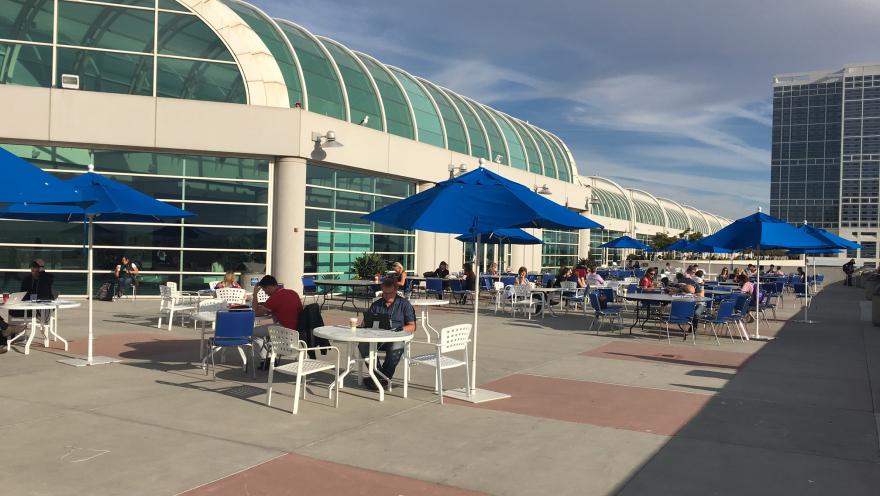Over 30,300 neuroscientists from around the world gathered in San Diego in November for the Annual Meeting of the Society for Neuroscience (SfN), the largest annual meeting of scientists in the world. ALS was strongly represented at the meeting, with the presentation of approximately two hundred new research studies on genes, models, disease mechanisms, and therapy development. These included many supported by The ALS Association under our TREAT ALSTM global research program that I highlight below.
Every SfN, the Association has an information booth in the non-profit exhibitor section, where we are enthusiastic to connect with both the ALS and neuroscience community. We met so many wonderful people who asked us great questions and new collaborations were formed. I thank Steve Becvar, the Executive Director of the Greater San Diego Chapter and all the volunteers he recruited from The Association who were instrumental in organizing and running the booth during the meeting. It is always enjoyable to work with our colleagues in sunny San Diego!
Research from all over the world was presented at the meeting, including information about precision medicine. For precision medicine in ALS, a large amount of information is collected from people living with ALS and in many cases, thousands of people participate in each program. Performing studies on such a large scale increases the chances of novel discovery to move the ALS field forward. At SfN, ALS precision medicine was well represented with updates from our partners Answer ALS and NeuroLINCS. Both data and research from the projects are shared with the entire ALS community, which highlights how important a collaborative approach is to fight ALS. Significant progress has been made on both projects and I look forward to learning about continuing developments in these studies.
ALS Association-funded researchers had a large presence at the meeting who are all doing impressive work. Dr. Nadine Bakkar (below left) from the Barrows Neurologic Institute in Phoenix explained how her team is using the IBM Watson supercomputer to identify new ALS disease modifiers that will lead to a better understanding of disease pathways. Milton Safenowitz Postdoctoral Fellow Dr. Ke Zhang (below top right) from Johns Hopkins University, presented their research on an important ALS genetic modifier, called ataxin-2. He and his team found that mutations on ataxin-2 may contribute to altering cellular nuclear transport, an already-identified ALS disease pathway involving shuttling molecules in and out of the nucleus. Dr. Geronimo (below bottom right) from Penn State College of Medicine in Hershey, Pa. presented information on how they are improving P300-based brain-computer interface (BCI) spellers. He also gave an update on their funded BCI-telehealth project that is already demonstrating success.
New discoveries in how the C9orf72 gene, the most common cause of inherited ALS, were also presented. For example, Dr. Steven Boeynaems of the University of Leuven in Belgium showed how structural changes in unusual proteins called dipeptide repeats (DPRs), produced by the C9orf72 expansion, could contribute to cell toxicity observed in ALS. Also, Dr. Wilfried Rossoll at Emory University in Atlanta explained that defects in the nuclear membrane, which surrounds the nucleus, may be common in many forms of ALS, thereby uniting the theme that these defects contribute to cellular toxicity.
It is encouraging to see such tremendous progress and the significant increase in the number of investigators joining the field. It is impossible to highlight all the studies in this brief message and look forward to following the exciting progress in the upcoming year. All these findings will collectively bring us closer to our goal of developing treatments and identifying the causes of the disease.
-Dr. Lucie Bruijn, Chief Scientist of The ALS Association
For more information, please read here for additional details on the above studies and more.


Join the conversation. Please comment below.